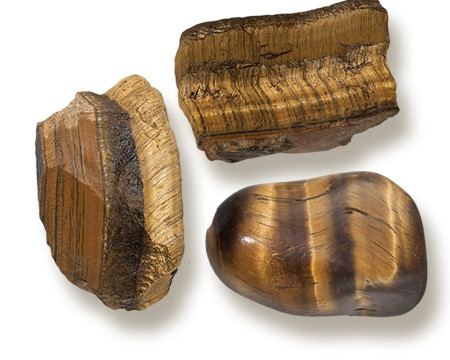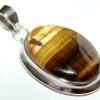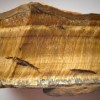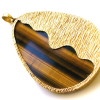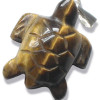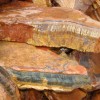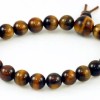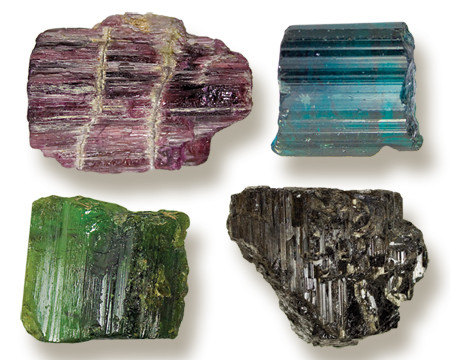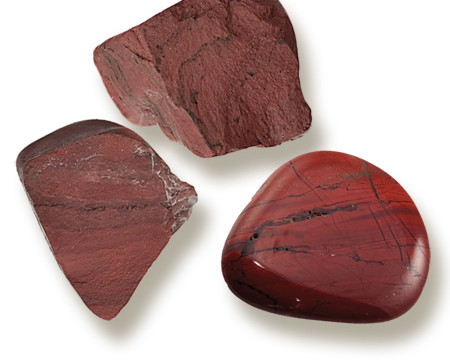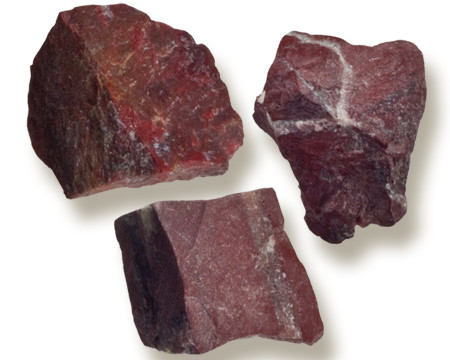Product Description
FOUND IN: SOUTH AFRICA, AUSTRALIA, CANADA, INDIA, NAMIBIA, BURMA & USA
Tiger eye was first discovered in South Africa in the early 1800’s. The first theories about tiger’s eye formation were developed in 1873 by the German mineralogist Wilbel in 1873. More recently, a new theory of tiger eye has been proposed that argues that it is not in fact pseudomorphic, but rather forms from crocidolite by a different mechanism, through a series of cracking and sealing episodes.
Tiger Eye will display different colors according the exact nature and amount of the inclusions. Grayish yellow, semi translucent appearance of the cat’s eye is due to inclusions of croicidolite and , less commonly hornblende, it has quite a silky luster. Tiger Eye is black with iron oxide staining that gives the yellow and golden brown stripes. Hawk’s Eye forms when the croicidolite changes to quartz but the blue-gray or blue-green color of the original material remains. Whew!
This quartz composite gemstone begins as a fibrous blue mineral called croicidolite, which is comprised of iron and sodium. The transformation begins as clear quartz becomes imbedded between the fibers of crocidolite, and the completed process will result in one of two gemstones; a blue stone called Hawk’s Eye or the golden brown stone called Tiger’s Eye.
As the gem is created the iron and sodium are completely dissolved, the quartz takes on the fibrous formations as well as the blue color of crocidolite. This creates the parallel lines within the gemstone giving it the liquid luster and light movement the stone is so loved for.
Even though the iron and sodium dissolve, traces of hydrated oxide of iron are left behind between the crocidolite and quartz, creating the yellows that are common to both Hawk’s Eye & Tiger Eye. How much of this mineral is deposited will determine how red, yellow or brown a Tiger Eye will be. The rarer blue Hawk’s Eye will have only the slightest amounts.
METAPHYSICAL:
With its vibrant golden color, tiger-eye is used to increase wealth and vitality. It enhances courage, brings passion and physical strength, and allows these attributes to be tempered with mental clarity and a joyful outlook.
As a power stone Tiger Eye has a wonderful reputation for attracting wealth, money and luck. However it has some powerful spiritual uses as well. The liquid movement of light across the stone makes it an excellent tool for vision or divination work.
Historically Tiger Eye has been used in protective medicine. Roman soldiers would wear engraved stones during battle, it is especially helpful against dark magic. A good luck stone, it is also used for discerning the truth in any situation, it can help with understanding of any cycle through which one is living.
SCIENTIFIC:
Color: Golden-Yellow, Gold-Brown
Color of streak: Yellow-Brown
Moh’s hardness: 7
Specific gravity: 2.64 – 2.71
Cleavage: None
Fracture: Fibrous
Crystal system: Hexagonal (Trigonal); Fibrous Aggregate
Chemical composition: SiO2 silicon dioxide
Transparency: Opaque
Refractive index: 1.554 – 1.553
Double refraction: +0.009
Dispersion: 0.013
Pleochroism: None
Absorption spectrum: Not Usable
Fluorescence: None

